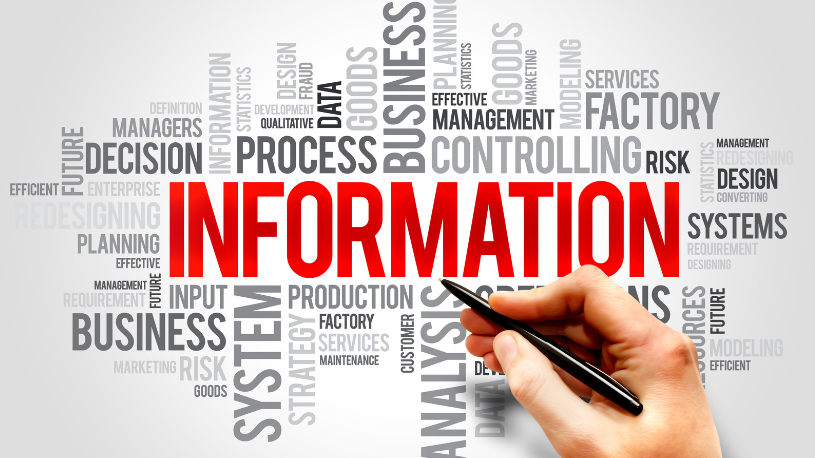In today’s digital landscape, protecting sensitive data is paramount. As an expert in information risk management, I understand the critical importance of safeguarding information assets from potential threats. From cyberattacks to data breaches, organizations face a myriad of risks that can compromise their valuable data.
Effective information risk management involves identifying, assessing, and mitigating potential risks to ensure the confidentiality, integrity, and availability of information. By implementing robust security measures and proactive strategies, businesses can proactively protect their data assets and maintain trust with their stakeholders. Stay tuned as I delve deeper into the world of information risk management and provide valuable insights on how to navigate this complex landscape effectively.
Information Risk Management
The Basics of Information Risks
 In understanding information risk management, it is crucial to grasp the basics of information risks. Information risks refer to the potential threats that can compromise the confidentiality, integrity, and availability of data within an organization. These risks can stem from various sources, including malicious attacks, human errors, natural disasters, and technological failures.
In understanding information risk management, it is crucial to grasp the basics of information risks. Information risks refer to the potential threats that can compromise the confidentiality, integrity, and availability of data within an organization. These risks can stem from various sources, including malicious attacks, human errors, natural disasters, and technological failures.
Effective information risk management involves identifying and assessing these risks to determine their potential impact on the organization. By understanding the basics of information risks, I can proactively implement strategies to mitigate these threats and protect sensitive data from unauthorized access and disclosure.
Importance of Information Risk Management
Recognizing the importance of information risk management is paramount in today’s digital landscape. As data breaches and cyber threats become more prevalent, organizations must prioritize safeguarding their information assets. Information risk management is essential for maintaining the trust of stakeholders, complying with regulations, and avoiding costly security incidents.
By emphasizing the significance of information risk management, I can establish a proactive approach to data security, ensuring that robust measures are in place to prevent and respond to potential risks effectively. Prioritizing information risk management demonstrates a commitment to protecting valuable data and upholding the organization’s reputation in an increasingly interconnected world.
Key Components of Information Risk Management
Identifying Information Risks
 In information risk management, the initial step is identifying potential risks that could compromise data security. I analyze various sources of risk, such as cyber threats, unauthorized access, insider threats, and system vulnerabilities. By pinpointing these risks, I can develop tailored strategies to mitigate them effectively.
In information risk management, the initial step is identifying potential risks that could compromise data security. I analyze various sources of risk, such as cyber threats, unauthorized access, insider threats, and system vulnerabilities. By pinpointing these risks, I can develop tailored strategies to mitigate them effectively.
Once risks have been identified, I assess their severity and impact on data integrity. I quantify the likelihood of each risk materializing and evaluate the potential consequences to prioritize mitigation efforts. This thorough risk assessment allows me to allocate resources efficiently and address the most critical vulnerabilities promptly.
Risk Response Strategies
After evaluating risk levels, I implement response strategies to manage and reduce potential threats. I develop proactive measures, such as implementing security controls, conducting regular audits, and training employees on best practices. By continuously monitoring and adapting these strategies, I ensure a robust defense against evolving threats in the digital landscape.
Implementing Information Risk Management in Organizations
Expanding on the key components of information risk management, it’s essential to delve into the implementation phase within organizations. This phase involves various strategies and practices aimed at effectively managing and mitigating potential risks to safeguard sensitive data and ensure data security.
Role of Technology
 In modern information risk management practices, technology plays a pivotal role in enhancing security measures and mitigating risks. Implementing robust cybersecurity tools and solutions is crucial to fortify organizational defenses against cyber threats and unauthorized access. Technologies such as encryption, intrusion detection systems, firewalls, and security information and event management (SIEM) tools are instrumental in detecting and preventing potential security breaches.
In modern information risk management practices, technology plays a pivotal role in enhancing security measures and mitigating risks. Implementing robust cybersecurity tools and solutions is crucial to fortify organizational defenses against cyber threats and unauthorized access. Technologies such as encryption, intrusion detection systems, firewalls, and security information and event management (SIEM) tools are instrumental in detecting and preventing potential security breaches.
Another vital aspect of implementing information risk management is the development and implementation of comprehensive training and awareness programs for employees. Human errors and negligence often pose significant risks to data security; hence, educating staff on best practices, security protocols, and potential risks is paramount.


